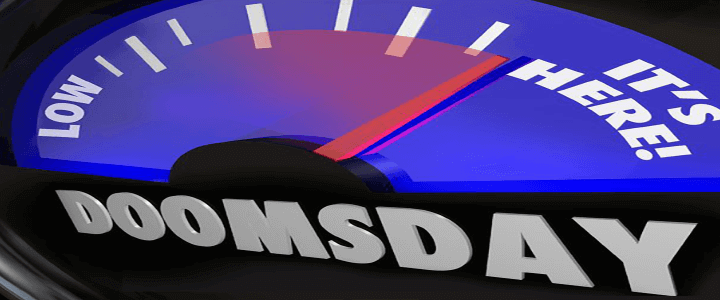The famous, or infamous, Doomsday Clock of the Bulletin of the Atomic Scientists now stands at two minutes to midnight.
This indicates that, in the eyes of the Bulletin’s Science and Security Board, the world is closer to nuclear war (or drowning in melted polar ice, since climate change is now part of the doomsday clock’s calculus) than it has been at any time since 1953, the year the United States developed the hydrogen bomb.
“In 2017, we saw reckless language in the nuclear realm heat up already dangerous situations and re-learned that minimizing evidence-based assessments regarding climate and other global challenges does not lead to better public policies.”
You’ll forgive me if I have always viewed the Doomsday Clock, from the moment I first learned about it in the late 1970s, as a hyperbolic, panic-stricken load of horse hockey (apologies to Col. Sherman Potter).
No rhyme or reason behind doomsday
On the occasion of the Bulletin moving the clock to the closest we’ve theoretically been to the end of the world in a fiery nuclear ball, it’s worth reviewing what events have caused the clock to move up and back, and which ones haven’t. Because the events tell us more about the people who publish the Bulletin than they do about the state of nuclear affairs.
“Conclusion of a limited test-ban treaty is an encouraging event. It strengthens the slim hope that mankind will escape destruction in a nuclear war, and justifies the moving of the Bulletin’s clock a few minutes back from the hour of doom.” Such was the opening of the announcement from the Bulletin in October 1963, when it reset the clock from seven minutes to midnight, where it was set in 1960, to 12 minutes to midnight.
The 1963 rollback was the result, as the snippet above reveals, of the 1963 Limited Test Ban Treaty signed by the nuclear powers of the day: United States, the United Kingdom, France, the Soviet Union, and Canada. (Canada, for the record, disposed of its own nuclear weapons in 1984). The treaty ended above-ground nuclear weapons tests. At the time it was seen as an easing of tensions a year after the Cuban Missile Crisis.
And that’s where the Doomsday Clock’s utility falls apart. The “13 days in October” of 1962, where the U.S. faced off against the Soviet Union over the installation of nuclear-capable intermediate range ballistic missiles in Cuba, is without a doubt the closest that two nuclear powers have come to real nuclear war. The current kerfuffle with North Korea is child’s play compared to that crisis.
And yet throughout it all, the clock didn’t move.
panic, serenity, and everything in between
The clock went from 12 minutes to seven minutes in 1968, as the Vietnam War raged, Israel faced down its Arab neighbors, India and Pakistan fought, and France and China joined the nuclear club. It retreated three minutes the following year with the adoption of the Nuclear Non-Proliferation Treaty. Back two more minutes with the signing of the Strategic Arms Limitation and Anti-Ballistic Missile Treaties in 1972. The time kept dropping, and really plummeted During the Reagan administration.
Reagan’s national security strategy can be summarized in three words: “peace through strength.” That troubled the Bulletin. In moving the clock from seven to four minutes in 1981, it lamented that Reagan believed “the best way to end the Cold War is for the United States to win it.”
Reagan was right, the Soviet Union collapsed, the Iron Curtain dissolved, and democracy swept across Eastern Europe. By the end of 1991, the Bulletin had moved the clock back to 17 minutes to midnight, the furthest it has been since its inception in 1947. But the Bulletin wrongly asserted “The illusion that tens of thousands of nuclear weapons are a guarantor of national security has been stripped away.”
Nuclear weapons are still guarantor of national security, at least when it comes to war with another nuclear power. For all its perverse logic, mutually-assured destruction works. The proof is in the fact that the Soviet Union developed its own nuclear weapon in 1949 (three minutes to midnight) and since then no one, even at the height of tensions throughout the nuclear age, has used one.
A nuclear-armed North Korea is concerning, even scary. President Trump’s gruff, blunt New York style can be unsettling too. But none of it is cause for alarm, no matter what the Bulletin tells you.
We now return you to your regularly scheduled programming.




